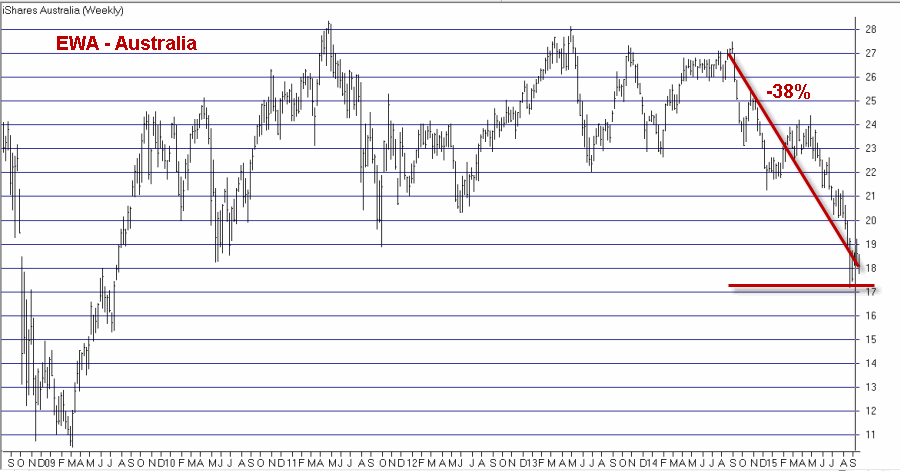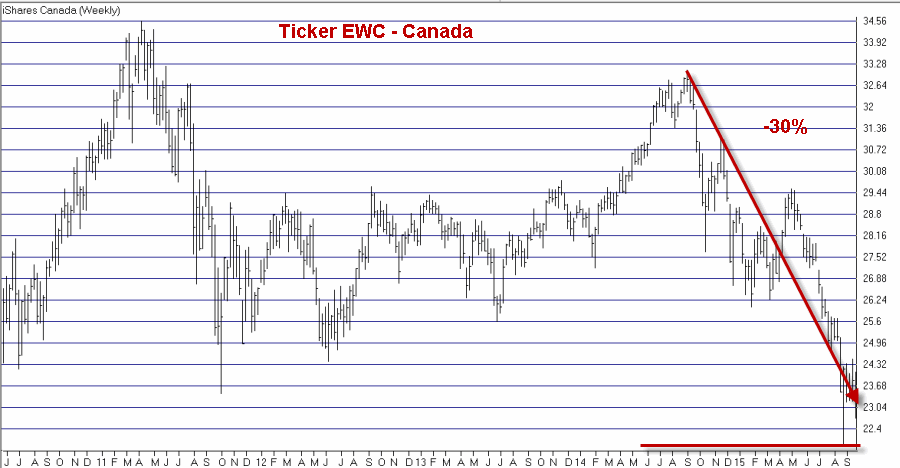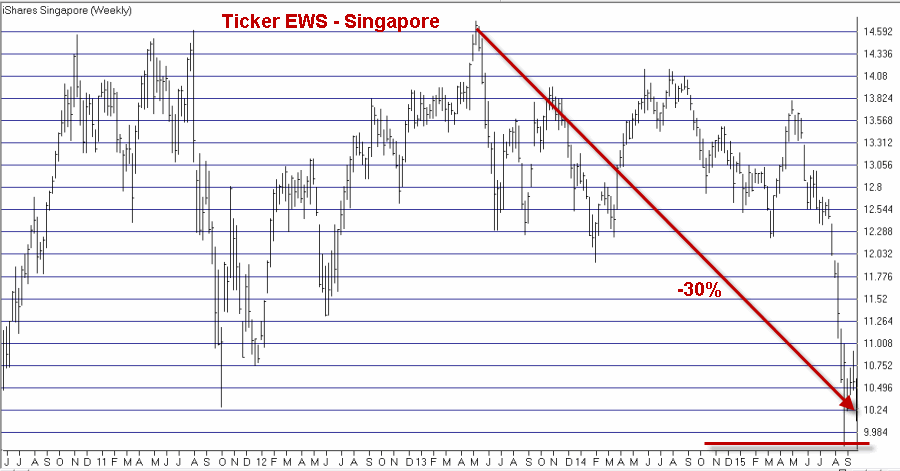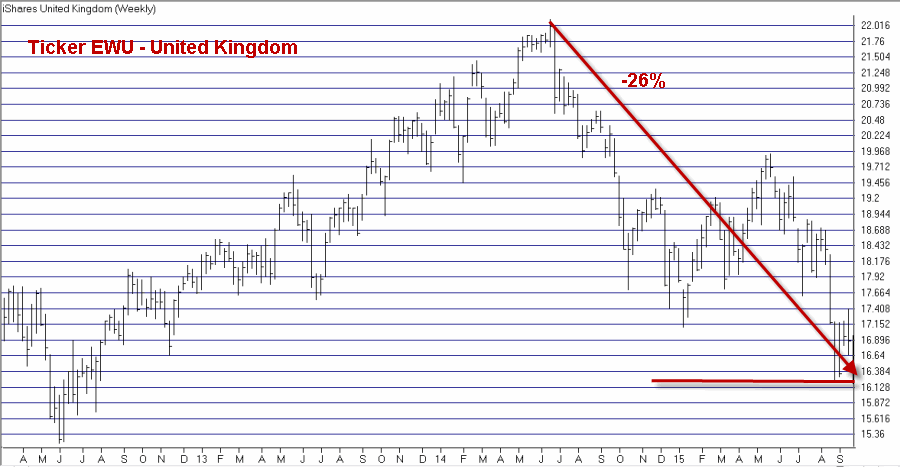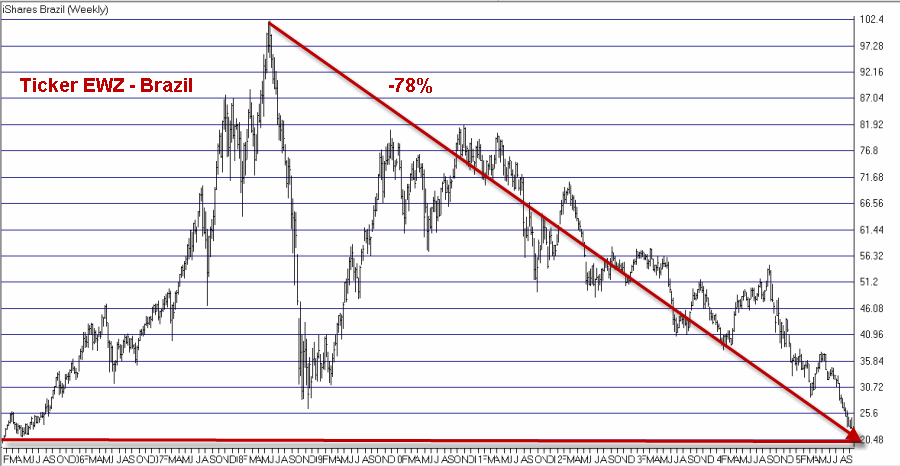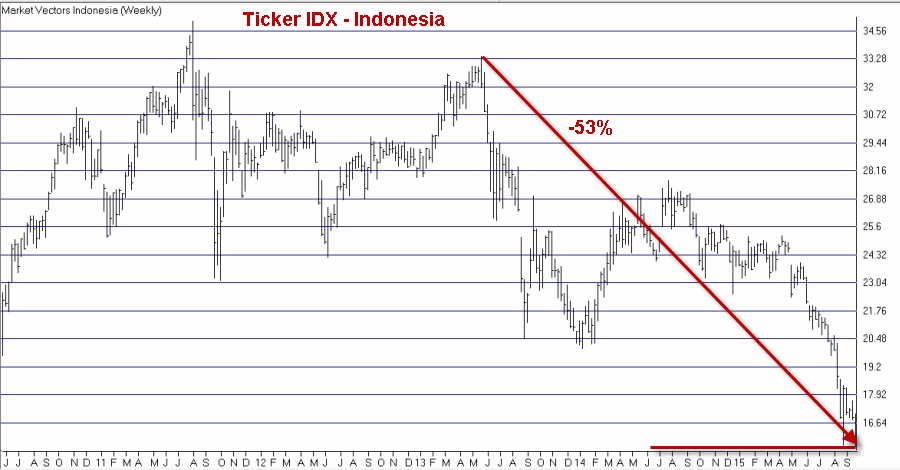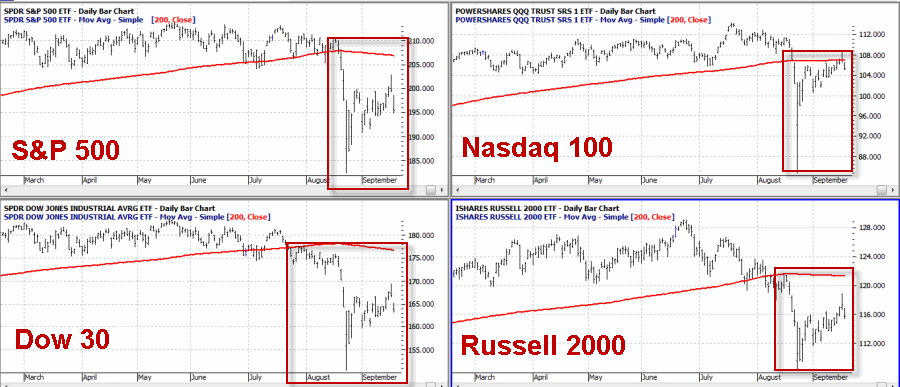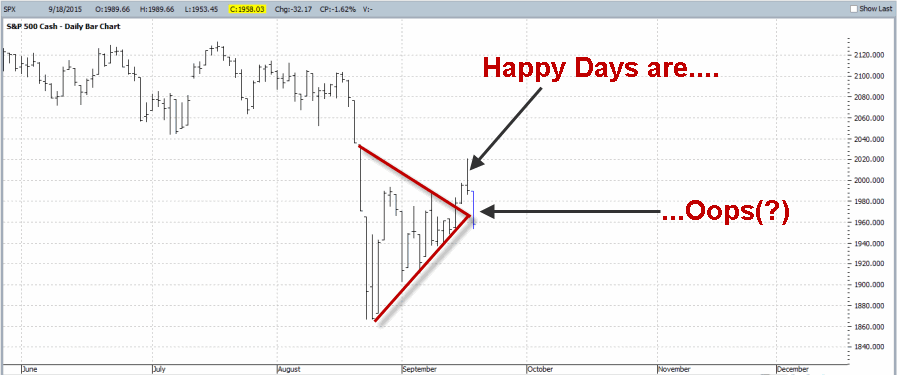Alright if you are not an options trader you are dismissed from class…
…..BUT WAIT!!!!
Before you run off, are you aware that there are limited risk ways to play potential tops or bottoms in things like crude oil and silver….even in extremely volatile markets? If you want to know more, maybe stick around.
(See also Check on Tech in Late October)
Before proceeding I must emphasize that what I am about to show you is an “example” and not a “recommendation.”
A Setup in Crude Oil
As you can see in Figures 1 and 2, both the weekly and daily Elliott Wave counts for ticker USO – an ETF that is designed to track the price of crude oil – are pointing lower.
 Figure 1 – Weekly USO Elliott Wave count pointing lower (Courtesy: ProfitSource by HUBB)
Figure 1 – Weekly USO Elliott Wave count pointing lower (Courtesy: ProfitSource by HUBB)
 Figure 2 – Daily USO Elliott Wave count pointing lower (Courtesy: ProfitSource by HUBB)
Figure 2 – Daily USO Elliott Wave count pointing lower (Courtesy: ProfitSource by HUBB)
One possibility for a trader who wants to play the bearish side is to sell short shares of USO. This is the most direct play on lower prices but does involve the use of margin and theoretically also involves unlimited risk. Another possibility is to buy a put option. This can cost very little and enjoys limited risk. However, as you can see in Figure 3, the implied volatility for options on USO is presently at the high end of the historical range.
What this means to option traders is that there is an above average level of time premium built into USO options, i.e., USO options are “expensive”. So if you buy a put option and volatility declines you can end up losing money due to volatility induced time premium decay, even if USO declines slightly in price. Figure 3 – USO implied option volatility is extremely high (i.e., time premium levels are high, i.e., selling options makes sense) (Courtesy www.OptionsAnalysis.com)
Figure 3 – USO implied option volatility is extremely high (i.e., time premium levels are high, i.e., selling options makes sense) (Courtesy www.OptionsAnalysis.com)
(See also Keep a Close Eye on, Um, the World (?))
A Trade to Take Advantage of USO Setup
The example trade for today is as follows:
*Sell 30 November 16 calls @ $0.47
*Buy 30 November 17 calls @ $0.26
This maximum potential profit on this trade is $630 and the maximum potential risk is $2,370. However, as we will see in a moment we will make plans to cut our loss at a much lower figure.
Also, with USO trading at $14.64 as this is written, the breakeven price for this trade is $16.21 and the full profit of $630 will be realized if USO is $16 a share or lower as of November expiration.
The particulars appear in Figures 4 and 5. Figure 4 – November USO Bear Call Credit Spread (Courtesy www.OptionsAnalysis.com)
Figure 4 – November USO Bear Call Credit Spread (Courtesy www.OptionsAnalysis.com)
 Figure 5 – November USO Bear Call Credit Spread (Courtesy www.OptionsAnalysis.com)
Figure 5 – November USO Bear Call Credit Spread (Courtesy www.OptionsAnalysis.com)
Summary
Repeating now, this is an example and not a recommendation. But for the record, the trade highlighted herein is well suited to profit if the Elliott Wave projections shown in Figures 1 and 2 pan out at all. The primary concerns with this position are:
A) You are risking roughly $900 (and possibly more) in order to make $630.
B) You must be willing to act to cut your loss if USO does rise above the August high of $16.45.
The good news is that this trade can make money even if USO rises by as much as 10+%.
How will it all play out? Only time will tell.
Jay Kaeppel



